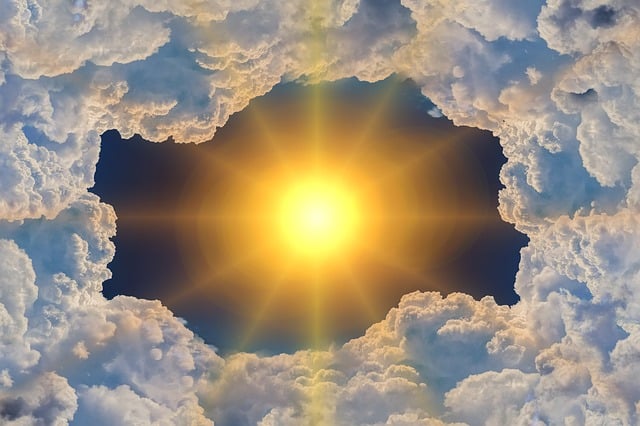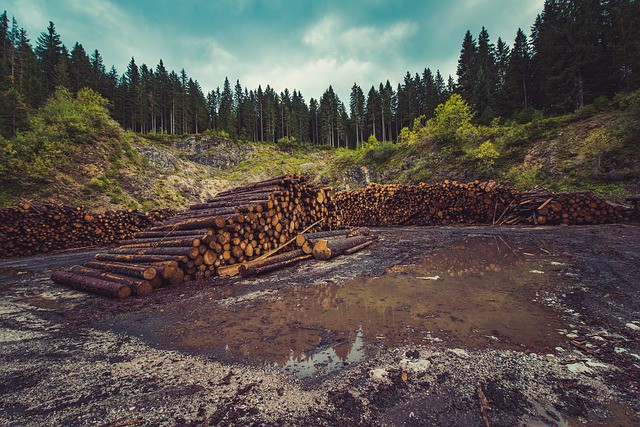Where is the Ozone Layer Located and Importance of Ozone Layer

First and foremost, the Earth’s atmosphere comprises a layer of gases (also referred to as air) which forms an envelope around Earth. The atmosphere is stratified into five (5) layers which are as follows: The exosphere, the thermosphere, the mesosphere, troposphere and the stratosphere. This envelope of gases is retained around Earth by the influence of the force of gravity. Notable functions of the Earth’s atmosphere include:
* Absorption of harmful ultraviolet radiation (by the ozone layer in the Earth’s stratosphere)
* Generation of constant pressure Earth’s surface to ensure continual presence of liquid water
* Warming of Earth’s surface through heat retention (Greenhouse effect)
* Constant regulation of diurnal temperature variation etc.
The Ozone layer also known as ‘ozone shield’ or ‘ozonosphere’ is one which is made from a combination of an Oxygen atom (O) with an Oxygen molecule (O2) yielding ozone (O3) in large amounts, which in turn results in the production of a protective layer in the Earth’s atmosphere.
The ozone layer is continually generated through the ozone-oxygen cycle within the stratosphere, in which ultraviolet rays cause an ozone molecule to split into an Oxygen atom (O) and an Oxygen molecule (O2). The oxygen atom then, combines with a nearby oxygen molecule (O2) to give ozone. This process could occur naturally in the Earth’s stratosphere through photo dissociation or artificially in the laboratory through the use of a silent electric discharge or spark.
However, the thickness of this protective layer of ozone in the stratosphere varies geographically and seasonally e.g the ozone layer has been found to be thinnest during autumn, while, it is thickest during spring while peak concentrations at different altitudes vary from one region of the world to the other. It must be noted that the thickness of the ozone layer refers to the amount of ozone that can be found in a column of a given area or geographical location.
Furthermore, significantly high amounts of ozone is usually produced in the tropics and transported towards the poles by stratospheric wind patterns. This process, referred to as ‘Brewer-Dobson circulation’ in the northern hemisphere is responsible for the variation in the thickness of the ozone layer during spring and thinness of the ozone layer during autumn.
Furthermore, uncontrolled exposure to ultraviolet radiation is known to cause acute skin and chronic eye damage, the ozone layer functions in the absorption of some of these harmful radiations from the Sun which is potentially dangerous to human, animal and plant health. The ultraviolet ray is chief among the radiations absorbed by the ozone layer.
Ultraviolet radiations (uv rays) are of three major types, which are: UVA, UVB and UVC. However, worthy of note is the fact that, all UVC, some UVB and none of UVA rays are absorbed by the Earth’s ozone layer during the transmission of ultraviolet radiations from the Sun through the Earth’s atmosphere.
Thus, the ozone layer ensures that only UVA and little UVB rays eventually reach the Earth’s Troposphere. Although, the UVB rays are suspected to be possible causes of cataracts, skin cancers, and harm to marine life and crop growth. The completely exempted UVC rays (achieved by the Earth’s ozone layer) therefore do not exist in the eventual solar radiation that reaches us on Earth.
Where is the Ozone Layer Located?
The ozone layer exists in the stratosphere which is well suited for the stability of ozone. This is because Ozone (O3) is highly unstable and short-lived in other layers of the Earth’s atmosphere. In the stratosphere the main function of this protective ozone layer is to absorb harmful ultraviolet radiations emitted by the Sun (at a relatively low concentration of about 12 parts per million when compared to the concentration of other gases in the atmosphere) and thereby control the exposure of life forms on Earth to ultraviolet radiations, which are potentially harmful radiations emitted by the Sun.
This layer is usually found in the lower portion of the stratosphere, approximately 15 to 35 kilometers (9.3 to 21.7 mi) above Earth. Furthermore, peak concentrations of ozone in the mid-latitudes occur at about 20km to 25km (about 12 to 16 miles), while in the tropics, peak concentrations occur at an altitude of about 26km to 28km (approximately 16 to 17 miles) and about 12km to 20km (approximately 7 to 12 miles) towards the poles.
Importance of the Ozone Layer in the Earth’s Atmosphere
The following points illustrate the importance of the ozone layer as an essential component of the Earth’s atmosphere:
- The Ozone layer absorbs harmful radiations from the Sun, thereby reducing cancer and cataract risks, making life on Earth safe from hazardous cosmic rays.
- It exerts greenhouse effect, thereby enabling conservation of radiant energy from the Sun in the form of heat.
- The presence of Ozone in the Stratosphere is very essential to life on Earth. Without this protective layer, life on earth would not be feasible.
The ozone layer as pointed out above is very important for the maintenance and protection of land and water life forms. However, since the late 1970s, the ozone layer in the Earth’s atmosphere has been found to decrease in proportions of about 4%. Also, a decrease in the spring thickness of the ozone layer in the Stratosphere called for major concern, as this development poses a major risk to land and water life forms.
This depletion in the thickness of the stratospheric ozone layer during spring is referred to as ‘ozone hole’. In addition, tropospheric decreases in springtime polar ozone concentration exists, which further contributes to the depletion of the amount of springtime ozone concentration in addition to the initial stratospheric events.
In a bid to nip the potential adverse events that might occur as a result of the decreased integrity of the ozone layer in the bud, scientists conducted large numbers of researches aimed at investigating the possible causes of this depletion. This effort by the scientists led to the discovery of the root causes of ozone layer depletion.
This includes: Manufacture of chemicals, especially the manufacture of refrigerants, propellants, solvents, halocarbon compounds and foam-blowing agents such as Chlorofluorocarbons (CFCs) and Hydro chlorofluorocarbons (HCFCs), altogether referred to as ‘Ozone-depleting substances’ ODS.
These ozone depleting substances are transported in to the stratospheric layer by wind currents after being emitted from the various manufacturing plants. Once these substances arrive the stratosphere, they release halogen atoms through a process of photo dissociation.
The halogen atom released in this process catalyzes the breakdown of ozone (O3) into Oxygen atom (O) and (O2) molecule. Thus, the protective function of the ozone layer becomes greatly impaired and permits the passage of some harmful cosmic radiations. In short, the higher the halogen or halocarbon atoms present in the atmosphere, the greater the depletion of the Earth’s ozone layer.
Thus, in 1987, a global agreement to protect the ozone layer by phasing out the production and use of ozone-depleting substances was reached in the United States of America. This was tagged the Montreal Protocol. This measure, as well as many other measures put in place by various countries of the world has led to an improvement in the condition of the ozone layer.
Sources:
- Basic Ozone Layer Science. Retrieved from: https://www.epa.gov/ozone-layer-protection/basic-ozone-layer-science
- Ozone formation and Destruction. Retrieved from: https://cimss.ssec.wisc.edu/wxwise/OZONE2.html
- The Montreal Protocol on Substances that deplete the Ozone layer. Retrieved from: https://www.state.gov/e/oes/eqt/chemicalpollution/83007.htm






